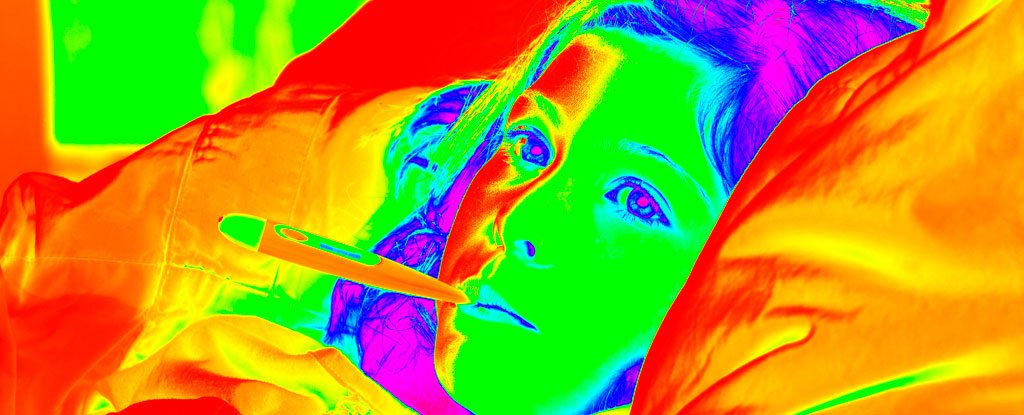
It is said that the human body rests at 37 degrees Celsius (or 98.6 Fahrenheit).
This average was established in France two centuries ago. Yet, our normal physiology seems to have changed slightly.
Researchers in the United States found that temperatures for men born between 1900 and 2000 were 0.59 degrees Celsius lower than those born about two hundred years ago.
Women had experienced a decrease of 0.32 degrees Celsius since 1890.
The authors speculated that it could be due to inflammation from disease, which is closely linked to body temperature. Modern medicine has led to a decrease in chronic infections. This may have chilled us, as the authors suggested.
A second group of researchers discovered a similar drop in body temperature in a Bolivian tribe that is far removed from the modern world. This was in 2020. In Bolivia, infections are still common and medical care has been minimal despite many improvements.
There was no other explanation for the recent drop in body temperature than improved hygiene, better water quality, or improved medical care. Harvard researchers are currently investigating another possible explanation: a decrease in physical activity.
Regular exercise often correlates with an increase of metabolism. This can lead to an increase in their body's resting temperatures for hours, or even up until a day. Falling body temperature could indicate a decrease in physical activity.
Unfortunately, the current methods for measuring physical activity weren't available 200 years ago. Therefore, we cannot compare how we move today to how we moved back then.
However, it is possible to use historical body temperatures as a "thermometer", to measure physical activity before these things were kept track of.
Theoretically, we could work backwards if we can model the relationships between body temperature, metabolism, and physical activity.
The idea started as a "back-of-the-envelope" calculation among Harvard researchers, and while their "first pass estimate" is a good start, it's still based on a bunch of assumptions. It is an interesting hypothesis, however.
Researchers eventually created a model that showed that every 1C rise in historical body temperatures was linked to a 10% change in the resting metabolic rate.
Due to the fact that male body temperatures have dropped since 1820s, it is likely that their metabolic rate has also fallen by 6 percent.
According to calculations, that's about half an hour of exercise per day. For a male 75-kilogram (165-pound) this is a 27-minute slow walk or run.
Andrew Yegian, a Harvard University skeletal biologist, says that this is the first attempt to estimate physiological data and quantify declines of activity.
"The next step is to make this a tool for other populations."
These initial estimates are based on body temperature as a proxy of metabolic activity and metabolic activity as an indicator of physical activity. It is very unlikely that they will be representative.
It is possible to determine the rate at which a population processes calories. However, it is certain that the average American does not exercise as much today than 50 years ago due to the advent of televisions and automobiles.
It is less clear how this affects our metabolisms and our body temperature. It might be different for women and men.
The authors state that fat also acts as an insulation, which affects heat dissipation and increases the cost of PA. However, our estimation methods didn't adjust for changes in fat mass over the time.
Our metabolic rates could be affected by a reduced need to thermoregulate in modern environments. This could also impact our health and nutrition.
Although the authors acknowledge that their calculations are not perfect, they believe their approximation can be used "as an anchor to understand how the decline of physical activity affected health & morbidity during industrialization."
Current Biology published the study.
